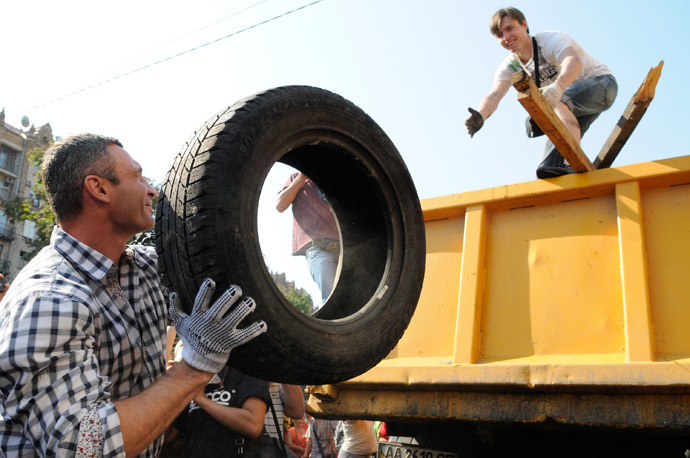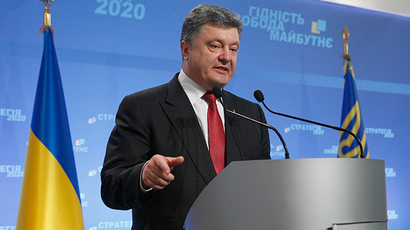Euromaidan anniversary: 21 steps from peaceful rally to civil war

Protesters who went out to Kiev’s Maidan Square exactly a year ago have their goal – a deal with the EU – achieved. However, they hardly expected the protest would also trigger a bloody civil war which has already claimed 4,000 lives.
READ MORE: #Euromaidan’s 1st birthday: Ukraine’s journey to a coup
RT takes a look at the milestone events of the past 365 days, which brought Ukraine – and the world – to where it is now.
1
Then-President Victor Yanukovich’s unwillingness to sign an Association Agreement with the EU led to Maidan (Independence Square) in Ukraine’s capital Kiev filling with protesters on November 21, 2013. The rally participants were holding hands, waving flags and chanting slogans like “Ukraine is Europe!”
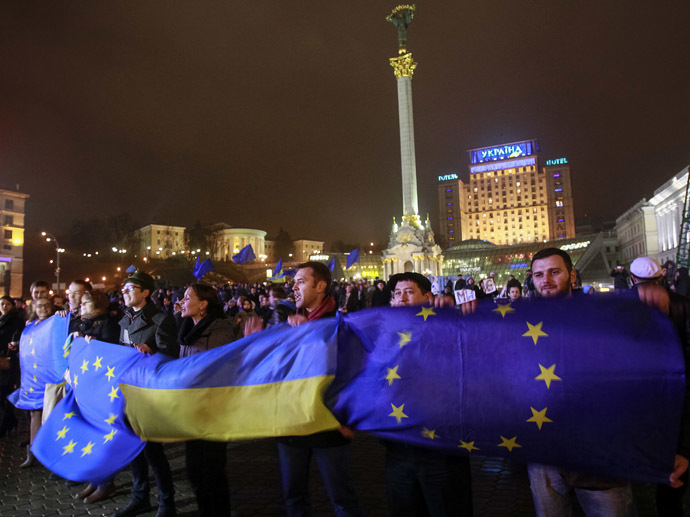
2
The brutal dispersal of a protest camp on the morning of November 30 was a turning point in the ensuing events. It’s still unclear whose idea it was to use force against demonstrators. Yanukovich laid the blame on the city's police chief and sacked him. But that was not enough for the Maidan protesters, who switched from demands of signing the EU deal to calls for the toppling of the government.
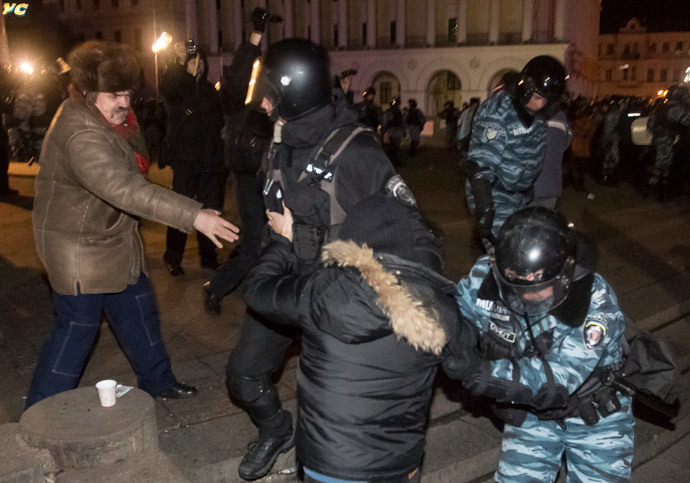
3
Over the course of several weeks, which followed the face of Maidan started to change – peaceful protesters were more and more giving way to masked and armed rioters, often from far-right groups. A collective of radicals called the Right Sector were among the most prominent. Peaceful protests evolved into a continuous stand-off between the rallying people and riot police.
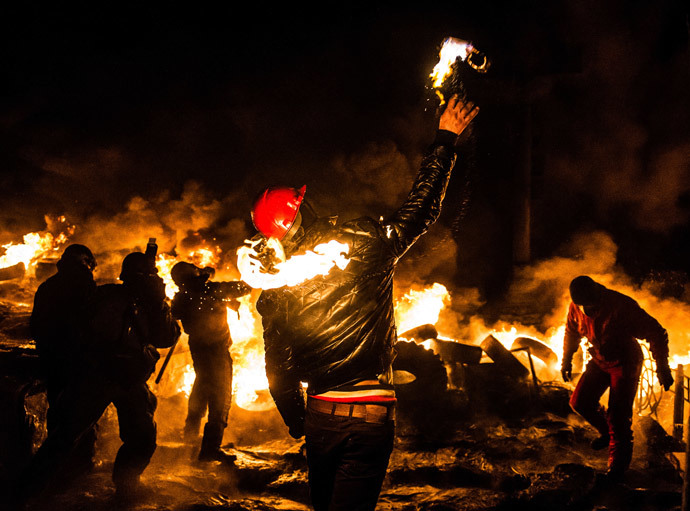
4
The deadliest day of the Maidan protests came on February 20 when over a hundred people were killed in the center of Kiev, most of them by sniper fire. The ongoing official investigation blamed a group of elite soldiers from the Berkut riot police for the killings. But there is a lingering suspicion that the massacre was committed by somebody among the anti-government forces.
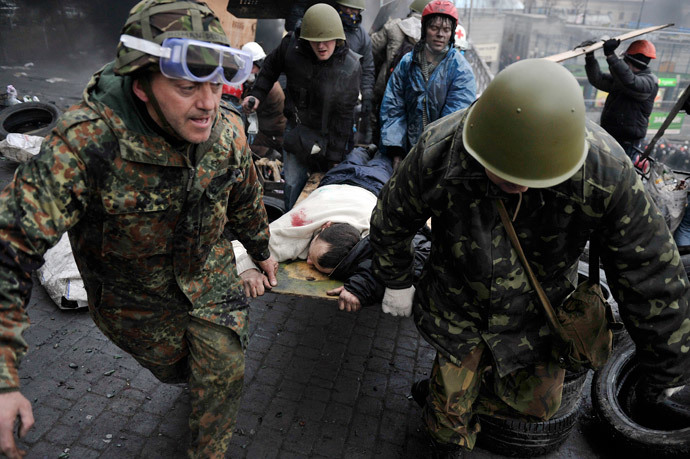
5
The day after the sniper shootings, Yanukovich and opposition leaders signed an EU-brokered agreement on ending the crisis. Rioting continued in Kiev despite this. The next day the opposition-driven Ukrainian parliament, the Verkhovna Rada, held an emergency session, where it was declared that the president was no longer in power. Yanukovich fled the country, labeling the events a coup.
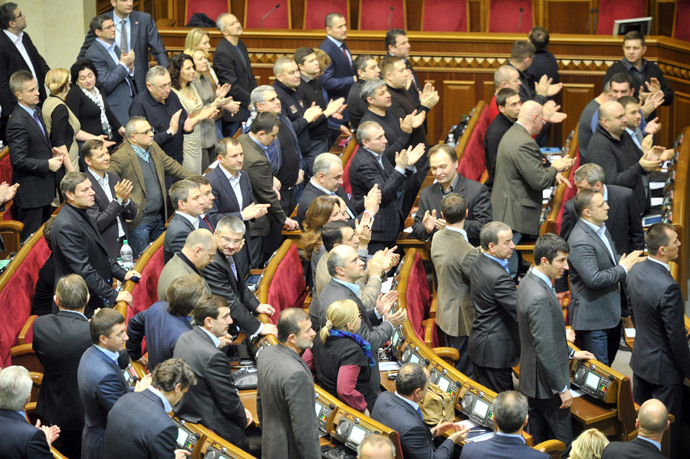
6
Among its first post-coup decisions, the Rada revoked a law that allowed Russian and other minority languages to be recognized as official in multi-cultural regions, triggering unrest in the mostly Russian-speaking Crimea and eastern Ukraine.

7
With calls rising among right-wing nationalists to go to dissenting regions and enforce loyalty through violence, local populations formed self-defense units and began to take over government buildings, similar to how anti-government protesters did it in Kiev and western Ukraine. In Crimea, the most Russia-leaning region of Ukraine, this drive was led by many local elected officials.
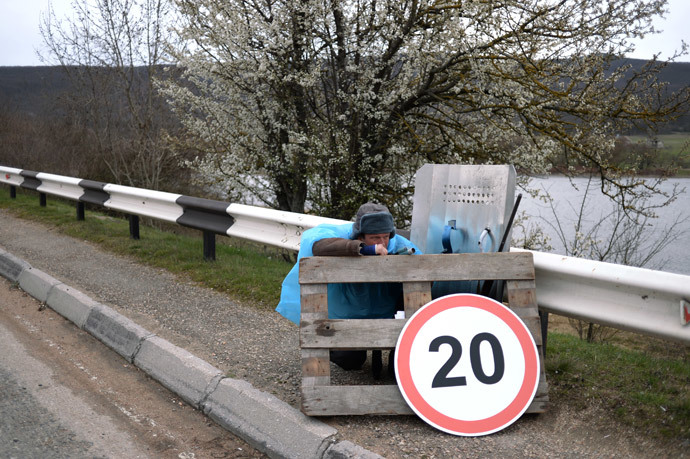
8
The Crimean people eventually voted for independence from Ukraine and to rejoin Russia at a March 16 referendum. The decision was made by 1.2 million, or 97 percent, of eligible voters. The result was not recognized by most Western nations, which claimed that the referendum was held ‘under a Russian gunpoint’ and implied that Crimea was taken by Russia through a military occupation.
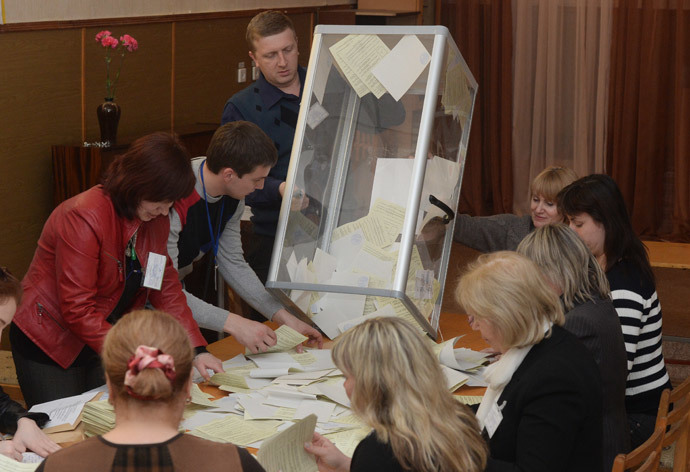
9
With anti-Kiev feeling growing in the other eastern regions, like Lugansk, Donetsk, Dnepropetrovsk, Kharkov and Mariupol, the prospect of a parade of secessions was becoming real. Kiev decided not to take any chances there and on April 15 launched what it called an 'anti-terrorist operation' against the anti-government protesters in the eastern regions. Special volunteer battalions were formed to take part in the operation. They are being supervised by the Ministry of Defense, but get their funding from various sources, including donations of some Ukrainian oligarchs.

10
One of the worst episodes to have happened in Ukraine over the year occurred on May 2, when dozens of people died in flames in Odessa. Radicals set ablaze the local House of Trade Unions with protesters opposing the post-coup government in Kiev blocked inside. None of those responsible for the crime, however, have been identified. While Kiev did present its report on the massacre, the document was allegedly falsified, as one of the investigators withdrawing its signature in protest.
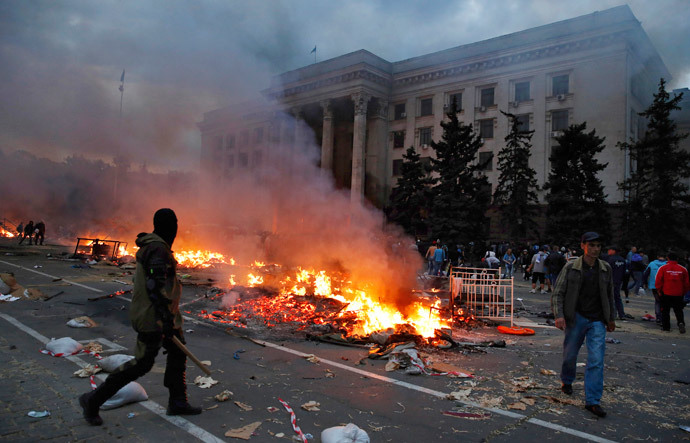
11
In May 2013, rebels in the Donetsk and the Lugansk regions organized referendum on declaring independence from Kiev, a scenario that the use of force by the government sought to prevent. President Poroshenko, who came to power in May 25 early presidential election, intensified the military crackdown on the breakaway regions.
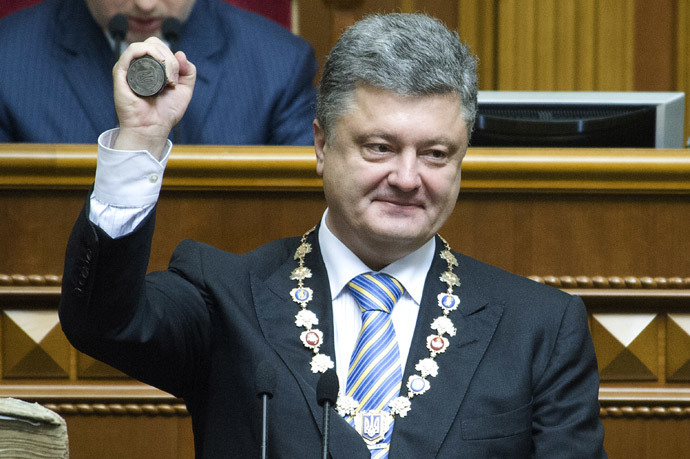
12
The armed conflict, which by that time had escalated into a fully-fledged civil war, took its toll on foreign civilians on July 17, when a Malaysian Airlines plane carrying 298 people was downed over Donetsk Region. Kiev and its Western backers accuse the rebels of shooting down the plane with a sophisticated Russia-supplied surface-to-air missile system. Rebels deny ever possessing such a system, while Moscow called for all possibilities to be taken into consideration, including those of Ukrainian troops being behind the deed one way or another.
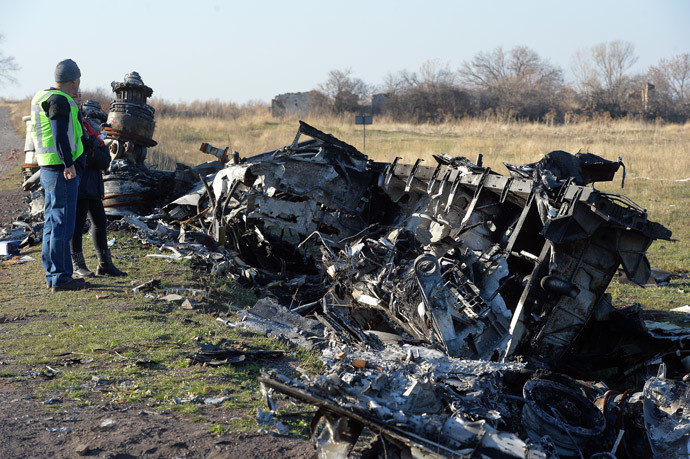
13
By mid-August the death toll in eastern Ukraine passed 2,000, according to conservative UN estimates. The majority of the fatalities were Ukrainian civilians trapped in the battle zone with either no chance to leave or refusing to abandon their homes even in the face of death.

14
Lacking professional and motivated troops to attack rebel-held sites, the Ukrainian government resorted to using its superiority in heavy weapons, subjecting cities in the east to artillery shelling, airstrikes, incendiary attacks and other forms of warfare not allowed against residential areas. Human rights groups accused Kiev, as well as the rebels, of committing war crimes.
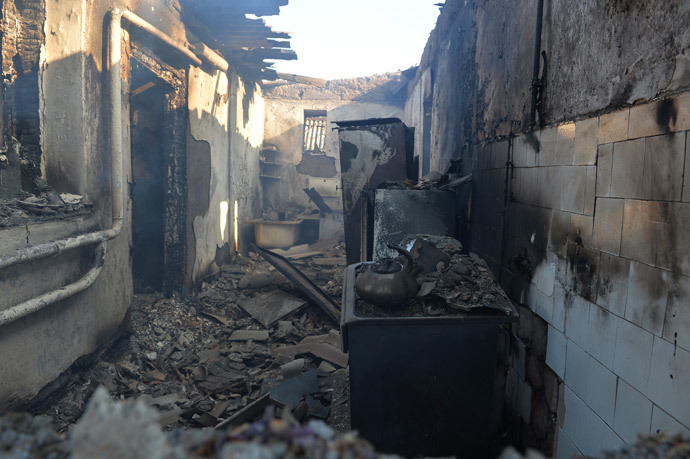
15
Those more fortunate fled the war-torn regions in their hundreds of thousands. According to the UN, by September the number of refugees in Ukraine surpassed 1,000,000, with 260,000 going to other parts of Ukraine and 814,000 to Russia. Moscow offered the people fleeing across the border benefits, job opportunities, help with relocating to Russian regions in need of working hands and other forms of support.

16
On September 5, representatives of Kiev and the rebels signed a Moscow and OSCE-brokered ceasefire in Minsk. The semi-official Minsk agreement gave hope of de-escalation of violence, disengagement of the warring parties and eventual reconciliation. Skeptics said it was rather a break in the hostilities, as both sides had plenty of those not satisfied with the deal. The violence continued, albeit on a smaller scale, claiming additional 1,000 lives by mid-November.

17
The regions ravaged by the Ukrainian civil war are in dire need of even basic essentials like drinking water and food, medicines and materials to repair damaged buildings. Russia has been regularly sending humanitarian aid to rebel-held Donetsk and Lugansk. The dispatch of the first aid convoy on August 12 sparked heavy resistance from Kiev, which accused Russia of planning some sort of stealth invasion. After two weeks of tense negotiations and attempts to get official approval, Moscow ordered the delivery to proceed without Kiev’s consent.

18
On September 16, Ukraine and the EU signed the landmark Association Agreement on trade. The suspension of this deal by the Yanukovich government triggered the chain of events leading to the current state of affairs. The most controversial economic parts of the agreement, however, will not be implemented until 2016, and for the very reasons it was suspended in the first place. Once fully in force, Ukraine’s EU free trade deal will force Russia to repeal preferential treatment of Ukrainian goods in the Russian market, which would hit Ukraine’s lucrative export market.
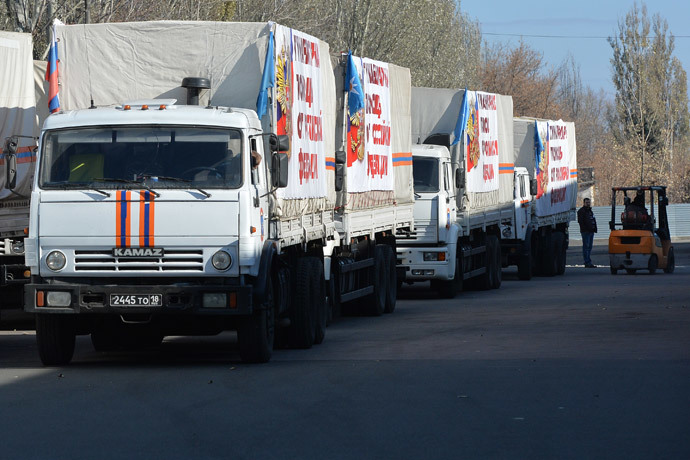
19
Both rebels and Kiev accuse each other of committing atrocities during the civil war. Both discovered mass graves in territories they took from each other during the hostilities. Apparently, there is a grain of truth in both sets of accusations. Amnesty International found evidence of summary executions committed by both sides, but declined from specifying the scope of atrocities committed by either side.

20
Early November marked what appears to be a new round of tension in eastern Ukraine. On November 2, the self-proclaimed Donetsk and Lugansk People’s Republics voted to elect their leaders and MPs. Kiev branded the move a breach of the Minsk agreement, revoked a law giving special status to the rebel-held areas, and declared that it will no longer protect most of basic human rights of the people living there. The UN estimates the death toll of the conflict to be at least 4,317, although the actual number may be much higher.
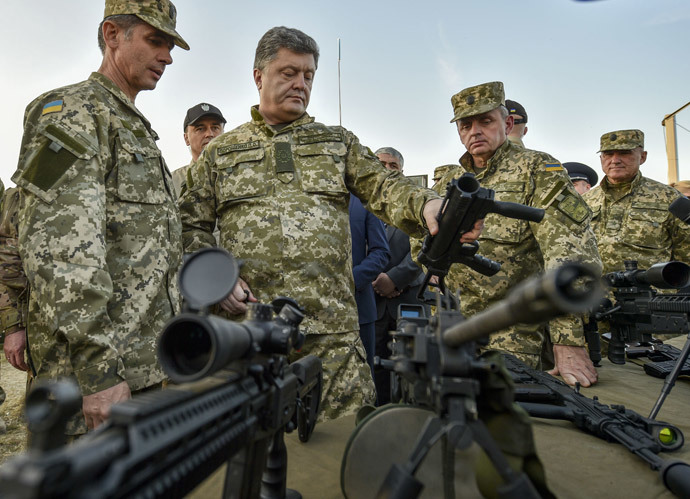
21
In early August former opposition leader-turned-Kiev Mayor Vitaly Klitshchko ordered to remove the last remaining activists from the Maidan. The city itself is enduring hard times. There is a crime wave amid upheaval among police. The central heating was only turned on in November, while its price tripled. The economy is about to grind to a halt, while foreign credit offered by IMF would require the government to take painful reforms and cut social spending.
